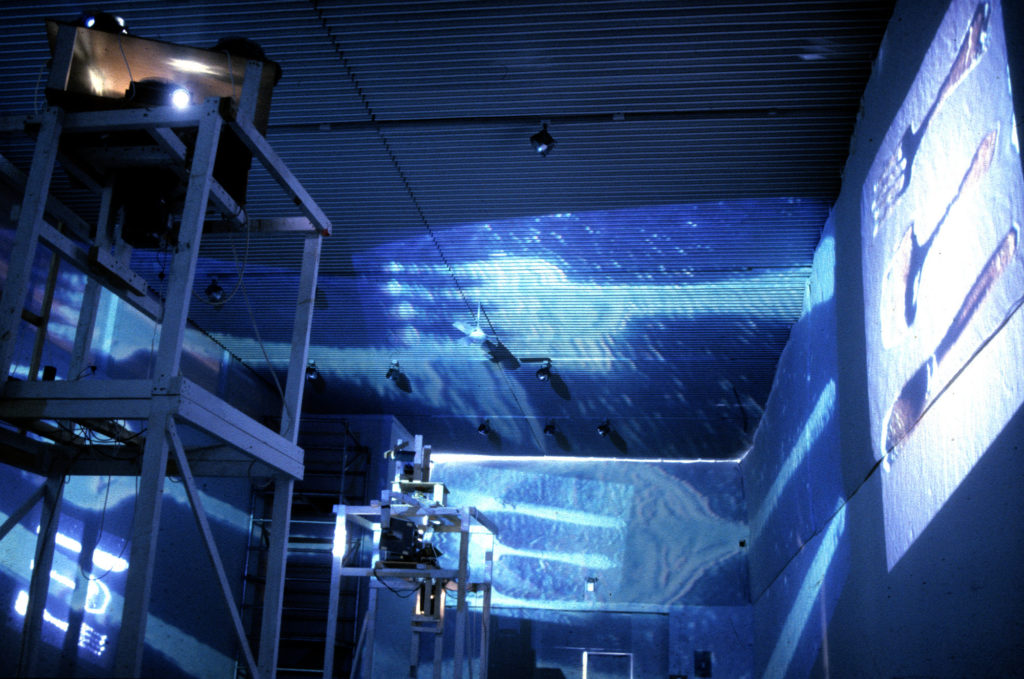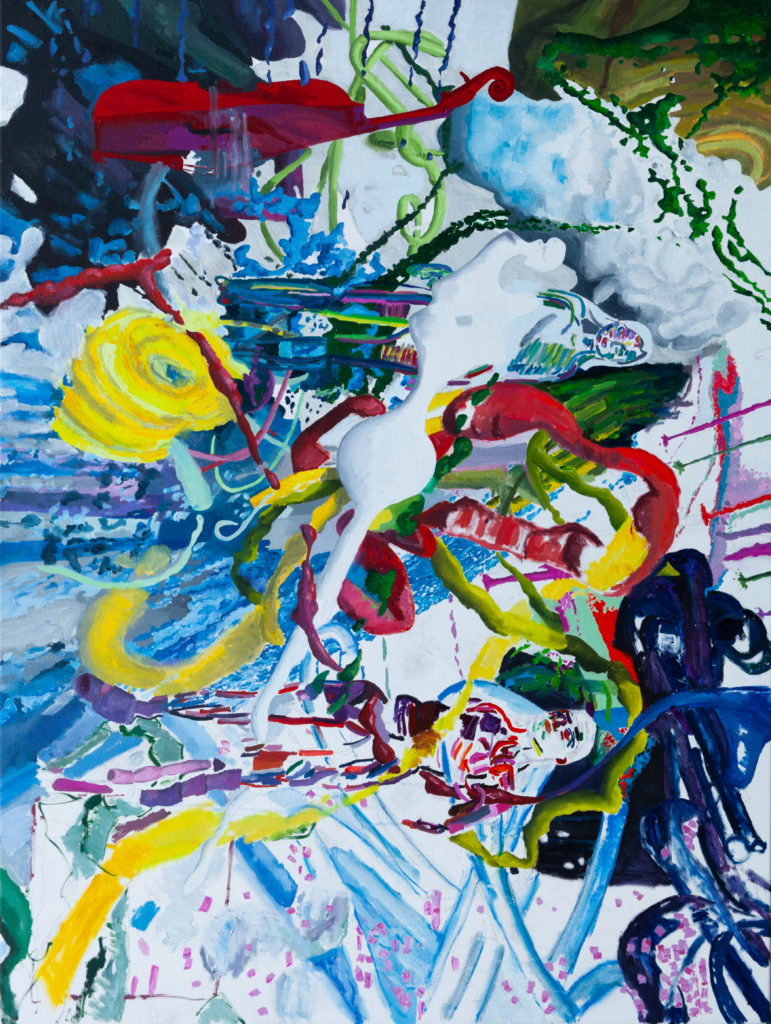1.Tell us what you do and your beginnings.
I am an artist who is working in digital animation and painting. I have been interested in electronic and digital images from the age of about 18, which is over 40 years ago. In the late 1970s, I got caught up in the punk movement. It was great fun, but by the time I started an art school, I just wanted to focus on painting (I’m tone-deaf and musically incompetent too), but I had taken with me some of the ideas of the period about shaking up artistic activities and incorporating the technology of the time. In those days, we constantly had to tune our televisions to get the best picture.
When I was doing this, I had this idea, from looking at the distortions on the screen, that this was a type of abstraction was ‘New’ and of the age. For many years, I thought I had invented this, but I think a guy in the US started film TV screens before me. Glitch had all sorts of possibilities for artistic expression. I didn’t even know there were such things as edit suites and video FX at that time. Over the years, I developed my glitch practice to make a wide range of painterly contemporary images, which I developed into a series of installations.
By the time I had left university, I started to explore the possibilities of TV graphics, and I soon realised that there was a lot that could be done with technology. Still, this technology was not really making something or images that were the original or really anything to do with contemporary art painting practice. These technologies did not and were not orientated towards the world of art; they are effects developed for graphics to be used by lots of people, they are not original. Around the early 1990s, I decided to stop making what today would be called glitch art.

It seemed that it really wasn’t offering me the degree of control that I wanted, and I could see that the digital possibilities for image manipulation would have a huge impact on the world of art. So I set out to learn about digital video and soon discovered 3D animation and 3D simulation. I was really impressed that the world is time-based and three-dimensional, and I should focus my artwork on these aspects.
It has been a long journey, and people’s interest in digital art is only just awakening. The central precepts of my glitch art were that it was original, and it was meant to be art. I find in today’s world of digital arts that it’s very easy to use a filter or technique that somebody else has made or programmed and apply it to an image or an object, and to me, it’s not so original. Today I spend a great deal of time learning the new visual programming techniques, which basically let you make your own “thang” or thing or effect.
Part of the reason I was interested in digital art was the idea that maybe I could paint in 3D. My digital art of the last 10 years has been focused on those fundamental aspects of art-making that use painting, drawing, mark-making, sculpting, deforming, and abstraction. And the underlying focus of my work has been in trying to find a new kind of abstraction in terms of figurative abstraction and abstract expressionist abstract as well as abstractions that can only be achieved in a 3D environment.

My artistic output breaks down into paintings based on my computer 3D painting experiments in 3D form, combined with experiments in various types of liquid nd gas simulations. And my digital time-based work which uses the same digital experiments, but they are Animated over time. I have been making artists video or time-based media for 40 years, and I have started to realise that a story or narrative is important with timebase media even if it is an abstract or conceptual story. And that when I make a painting, whole different sets of criteria such as colour composition and painting techniques have a much more important role to play than they do in a time-based project.
I started learning the very powerful suite of tools in the software called Maya nearly 20 years ago I had no idea how complicated it is (you can do a degree course in Maya these days) It has 600 different editors ! Maya can make entire future films or the special effects in Hollywood blockbusters. It is not built around just adding a filter to something. It is a complex modular system that links together modelling, character animation, particle systems, fluid and gas sims and hundreds of other things. It has the most complex and sophisticated 3D painting system of any software I know.
2.What does your work aim to say?
The experience and understanding of life and the possibilities of the future. I love nature, equality, freedoms, and seeing terrible wrongs righted. And of course, there are many terrible injustices, inequalities, and crimes against the environment, communities, and races. The sooner we all realise We are all equal – living in a small bubble of delicate nature where we need to share and accept each other, the better we will all be. I’m interested in colours and forms. In human originality and about the inner world, you could call it hidden human nature.

The more you look into yourself your psychology, the bigger and more complex it gets. The more you can see how much it affects us, colours our perceptions of the world and ourselves, and start to be aware of our misconceptions, hidden conditioning, etc. I have always been interested in philosophy, the environment, psychology and how painting will evolve as technology evolves. When I was at school, I took A-levels in biology and geography as I’ve always loved nature, and I was deeply struck even at the age of 18 at how nature was being destroyed unbalanced and how fragile it is and that it is global.
It’s not just happening somewhere else. I started having an interest in Eastern philosophies at a very early age, in fact, I’m much more interested in eastern philosophy than western, maybe because western philosophy is so uninterested in Eastern. Eastern philosophy is not really taught in the West in Universities nor really understood very well in general. It seems to me western philosophy has come to become something to do with scientific thinking and scientific reason, whereas Eastern philosophy it’s more about personal development, intuition, balance and psychology.

3.Where do you find inspiration for your art?
I have found a great deal of inspiration in psychology and eastern philosophy. I have taken concepts from psychology as a theme for many artworks. I think there is a great deal of synergy between psychology arts and society, politics, thinking in general, and it’s also a really good way for me to understand the subjects better. I’m also inspired by great paintings of the past and what can be achieved with the technology of today.
Continue on #MuseumWeek Magazine.
